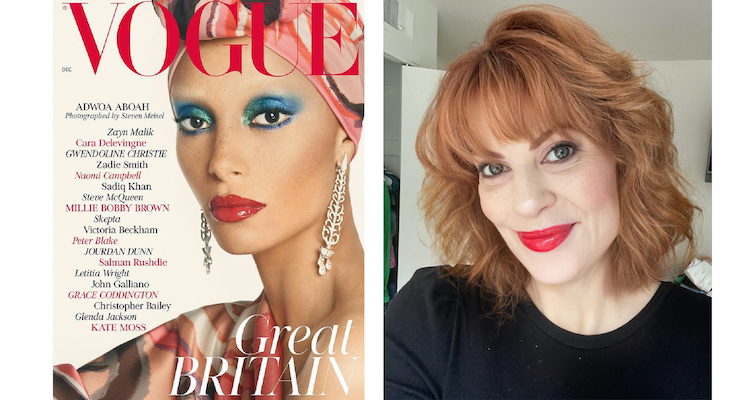Elle Morris, Senior Vice President of Global Strategy at Marks03.07.22
We've all seen beauty trends that begin on Instagram and how brands often take a stand on key issues on social media.
So what's the latest beauty trend on TikTok?
The social media platform is exposing beauty enhancements traditionally seen as beauty issues or flaws—and is driving a new beauty trend with its ‘flaw filters.’
With over one billion monthly active users globally, including a slew of skincare brands, TikTok allows users to record using various filters.
Many are for pure fun, and others enhance one’s appearance. Examples include the 'see yourself as a guy filter,' the mermaid, the drag queen, and the unicorn filters, plus 'jelly look, scarlett, rose, and many more.
TikTok's 'Flaw Filters'
But what’s popping these days are the “flaw” filters that show what a user would look like with a unibrow, tooth-gaps, faux freckles, under-eye circles, crying eyes, my fave freckles, and light eyebrows.Take a look at @victorialyn "apply" faux freckles, and @saracarstens add under-eye circles.
What most women spend time—and plenty of cash on— on daily trying to cover up and get rid of now seems cool, per the Gen Z kids, as witnessed on TikTok.
Trends growing over the past two years include intentional under-eye bags and faux-freckles. These are taking on viral momentum.
My 16-year old daughter, who has no freckles, gets henna faux-freckles in the summer. Two years ago, the “sick look” was described as "a way to seduce men" in Japan. It included red under-eyes, purposely pale skin, and no cheek color.
Beauty 'Flaws' Were Always 'In Vogue'
From freckles to flyaways, nuanced depictions of beauty aren’t a new trend. In 1967, Vogue published its first story about achieving ‘fake freckles’—and Vogue.com continues to feature freckled models and actresses.Diana Vreeland, the iconic Vogue editor (whose grandson created Diana Vreeland Parfums), made the most of imperfections in her muses. She chose to photograph a young Cher in a way that elongated her neck, and Barbara Streisand in profile to magnify her prominent nose.
Perhaps instigated by famed makeup artist Pat McGrath who painted subtle specks of freckled beauty for a Maison Martin Margiela show in 2017, an of-the-moment makeup trend depicting intentionally nuanced beauty is gleaning unexpected, albeit notable attention on TikTok and other social channels.
When freckled London-born “it” girl, Adwoa Aboah, with 1.2 million Instagram followers, donned the cover of British Vogue in 2017—TikTok in its present form hadn’t even launched yet. (This was Edward Enniful's debut issue of Vogue, shown above.)
So, what is giving this trend lift on TikTok today?
And why are faux dark circles, freckles, and almost invisible eyebrows having a moment?
First, the how-to format of social media promotes experimentation, and makeup artistry. It allows just that kind of temporary exploration.The promotional nature of social media’s algorithms may make this more fertile ground for experimenting with beauty taboos and turning "Glamour Don’ts" into "Glamour Do’s."
In this, the long arc of inclusive beauty may have found the perfect accelerant in social media.
Sara Carstens started the "eye-bag and dark circle trend" in 2021, which was covered by the NY Times—and it quickly went viral with over seven million views and 1.2 million likes.
She is quoted as saying, “I know what it’s like to be bullied for insecurities, such as for my ‘big sticking-out ears’ – but just like my dark circles, I’ve decided to show everyone how beautiful they can be.”
Today, ‘Post-Millennial' takes on beauty may be a reflection of their exposure to diversity—and a surging interest in social justice issues and inclusion.
We see up-and-coming models like Sara Grace Wallerstedt, often described as ethereal, celebrated. D Magazine featured her in the story, "The Ugly Duckling."
Then there is Aleece Wilson, a model that identifies her heritage as Native Indian, Black Canadian, Irish and Italian. Her Instagram handle is @oddfreckles, by the way. As a face that checks so many ‘boxes,’ she embodies a modern visage of beauty—one that is reflective of the future.
Gen Z Is the Most Diverse Generation
In the United States alone, Gen Z is already the most ethnically and racially diverse generation in the nation’s history. In fact, PBS reports that by 2045 the US will no longer have a racial minority.This shift may suggest a culture that has shaped a new breed of beauty enthusiasts—one that views the category through ‘we-centric’ lenses of inclusion, social justice and sustainability than ever before.
Soon the tension between older and younger generations—or what some have identified as the culture gap—may be so significant that it flips the script for the entire beauty category.



















